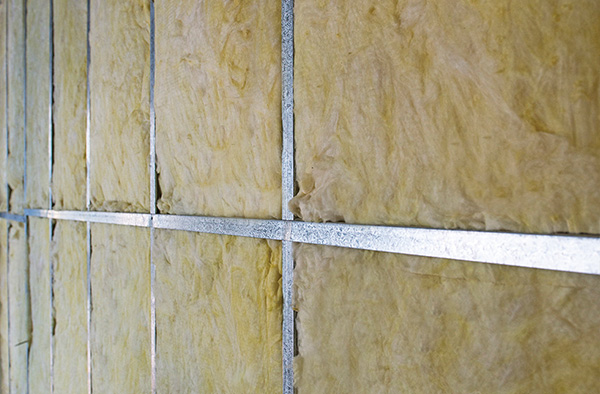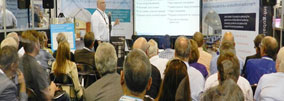Case study - Insulation for Non-Combustible Walls
Insulation for Non-Combustible Walls
Application Overview
Beyond structural performance, fire, acoustics and thermal – are perhaps the key elements of wall system performance and specification.
Whether on a boundary or in a facade of high-rise apartments, external walls require non-combustible insulation to reduce fire risk, while delivering peaceful acoustics and thermal performance for occupant comfort.
Similarly, many internal walls in commercial and multi-residential buildings require enhanced acoustic and fire separation, while some also require a thermal rating.
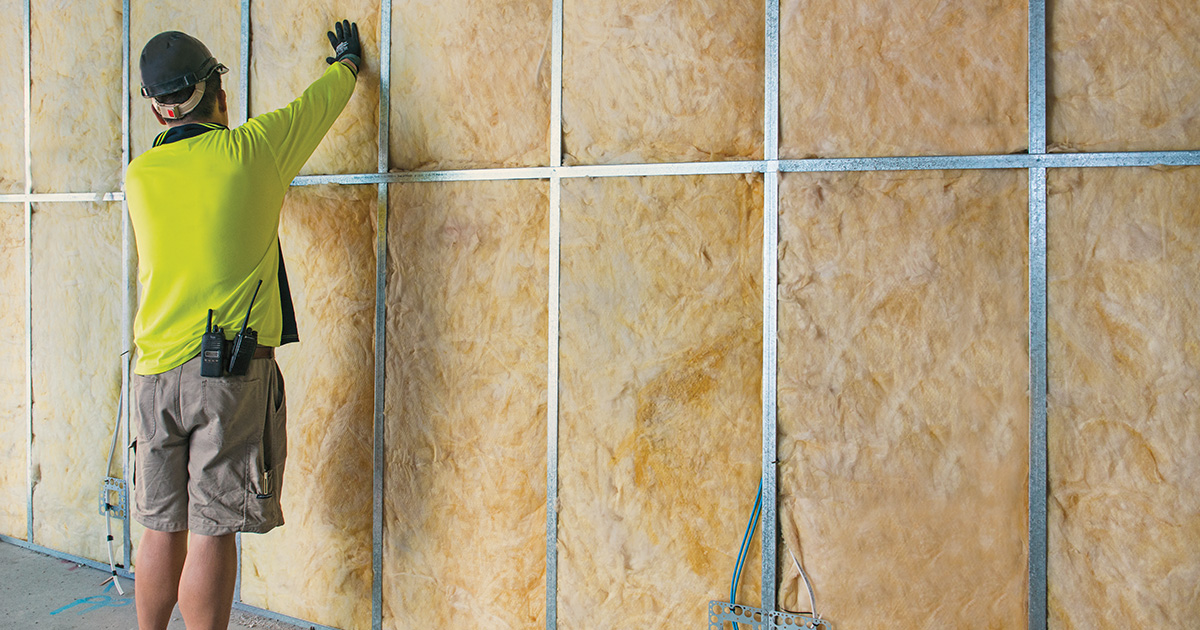
Non-Combustible External Walls
The use of non-combustible components in high-rise external facades is critical in preventing the vertical spread of fire, this includes insulation. If combustible insulation is used, fire could potentially spread within a façade cavity unnoticed.
Additionally, with increasing construction near transport corridors, external wall acoustic performance is becoming standard in project specifications. Add this to NCC thermal performance requirements and increased stringency in fire performance, designers, engineers and builders are looking for standardised solutions for fire, acoustics and thermal insulation.
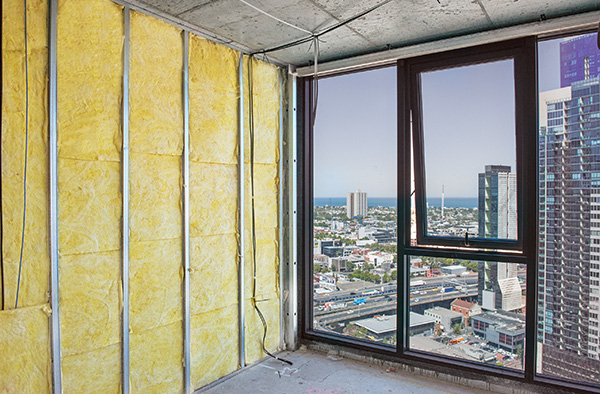
External Non-Combustible Walls
FRL Internal Walls
Many internal walls in commercial and multi-res buildings are required to provide fire and acoustic separation for occupant safety and comfort. Non-combustible insulation within separating walls provides much needed acoustic performance while reducing the risk of noxious gasses spreading in the event of a fire and increases the chance of survival for evacuating occupants and first responders. Some internal walls may also separate conditioned spaces from non-conditioned spaces, therefore requiring thermal separation between these spaces.
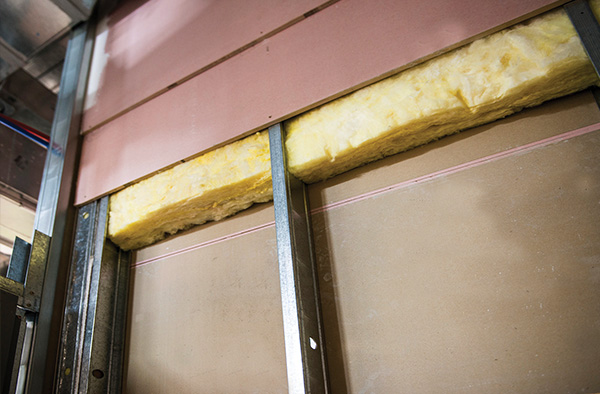
Internal FRL Walls
Non-Combustible Acoustic and Thermal Insulation
Bradford Acoustigard™ presents the ideal non-combustible insulation solution for external and internal walls, delivering enhanced fire, acoustics and thermal performance.
Acoustigard™ is a non-combustible, glasswool fibre insulation specifically engineered to reduce mid to high range acoustic transmission in walls (and ceilings). Manufactured in varying densities the acoustic and thermal performance can be tuned to suit project requirements.
Acoustigard™ can be supplied in varying thicknesses up to 90mm and densities up to 32 kg/m3, delivering up to R2.7 added insulation to the total wall thermal performance.
Unlike some other products, Acoustigard™ retains its form and won’t slump in the cavity, ensuring the risk of voids in walls are eliminated and maintaining the acoustic and thermal performance well beyond building handover to owners and tenants.
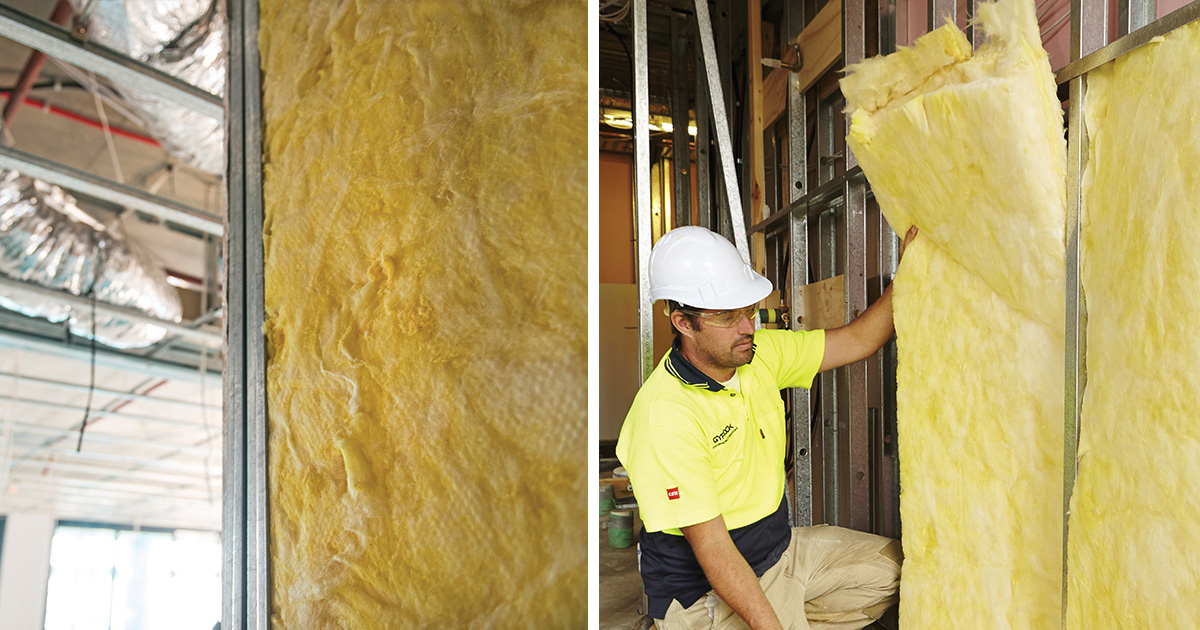
Technical Project Support
The DesignSmart team has a wealth of construction experience and utilise industry-leading building science research for acoustic, thermal and fire insulation products. As the experts in building insulation they can assist with:
- project-specific support
- value engineering challenges
- specification documentation
- system design detailing
- product installation and certification
Call the DesignSmart team on 1800 354 044 or visit our Technical Project Support page.
Publication: 19/06/2018
Information is based on the version of the National Construction Code (NCC) which was current at the time of publication. There may be changes in subsequent versions of the code which mean parts of this case study no longer apply.
Whilst every precaution has been taken to ensure that the content in this case study is both current and accurate at time of publication, CSR is not responsible or liable for any errors, omissions or for any consequences arising from the use of this case study. The information in the case study is general in nature and has solely been prepared for marketing purposes and should not be interpreted as specific advice for a project or product application. In all cases, the reader should seek professional, project specific advice prior to making design or product decisions.


